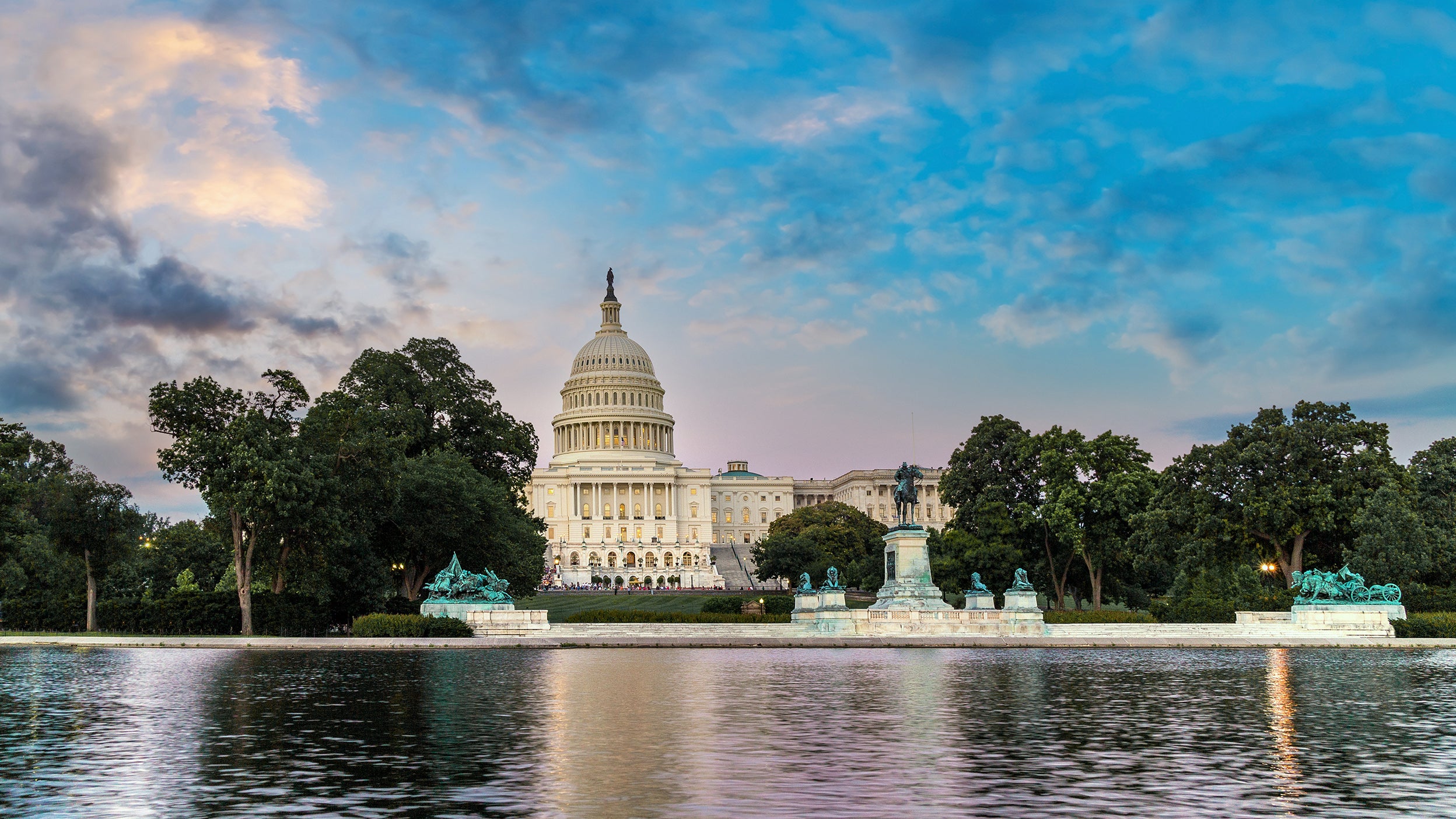
Legislative and regulatory 2026 Global Policy Outlook
Our team covers each region’s political contests, fiscal initiatives, and regulations, and examines how these issues may impact the financial landscape.

This is a “full” government shutdown, as the House and Senate have not agreed on any of the 12 appropriations bills needed to fund the federal government.
A compromise on the COVID-era enhanced ACA subsidies, which are set to expire Dec. 31, are likely to be a central element of any deal.
The administration’s threats not just to furlough, but permanently lay-off government workers this shutdown put added pressure on Democrats.
At 12:01am on Oct. 1, the United States woke up to its first full government shutdown in seven years. Among the most pressing questions right now: How long will the government shutdown last, what off-ramps are available to reopen the government, and are permanent cuts to federal jobs in the cards?
(For the market’s perspective, see my colleague Brian Levitt’s article on the historical impact of government shutdowns on equities.)
The most recent government shutdown in 2018 lasted 35 days. It was a partial government shutdown, as 5 of the 12 appropriations bills that cover funding for the federal government had been passed. The most recent “full” government shutdown lasted 16 days in 2013.
This is another “full” government shutdown, as the House and Senate have not passed identical versions of any of the 12 appropriations bills. However, “full” is a bit misleading, as typically, roughly 60% of the federal workforce is deemed "essential" and required to work during the period.
Prediction markets, where users can bet on the outcomes of events, give us an indication of people’s expectations. According to Kalshi, 62% expect the shutdown will last more than 5 days, 45% expect more than 10 days, and 18% more than 35 days, which would surpass the previous record.1 Polymarket shows 17% believe it will be 1-3 days, 26% believe it will last 4-9 days, 29% believe it will last 10-29 days, and 14% believe it will last longer than 30 days.2 We don’t see these odds as far off the mark.
Senate Minority Leader Chuck Schumer’s decision to scrap the 7- to 10-day stopgap proposal removes one potential off-ramp. It is also indicative of the internal political pressure to secure a concession from Republicans, who are reluctant to provide him with a win. It is possible this option could be revisited, however, very short duration Continuing Resolutions are typically reserved for situations where lawmakers and the White House believe a compromise is in striking distance.
A compromise on the COVID-era enhanced Affordable Care Act (ACA) subsidies, which are scheduled to expire on Dec. 31, are likely to be a central element of any deal to reopen the government. However, just because the issue is easily identified does not mean it will be easy to resolve. Even Vice President J.D. Vance acknowledged that discussions on some extensions need to happen, though he encouraged that they happen in the “context of an open government.”
Democrats have left themselves some wiggle room by not being specific about their ACA extension demands. House Ways & Means Committee Ranking Member Richard Neal (D-MA) seemed to open the door to income limits when he said, “I think the question of subsidies for people that are making half a million dollars — I mean, that should be subject to a discussion and negotiation as well.”3
Republicans are divided on the issue of extending ACA subsidies. Many politically vulnerable moderate Republicans want to see some form of ACA subsidy extension to prevent most of their voters from experiencing higher premiums before next year's election. Fiscal conservatives, a larger bloc, oppose the idea of extending a pandemic-enhanced ACA benefit. Given President Trump’s influence over Republican lawmakers, his blessing will be needed to ensure whatever compromise emerges – likely some form of extension that applies income limits – has the sufficient GOP support needed to move an eventual spending package.
A lengthy negotiation over an extended government shutdown may make it more challenging to move and reconcile the 12 annual appropriations bills. As a result, some ACA compromise may be attached to an eventual stopgap that lasts through the remainder of fiscal year 2026. From the White House perspective, they have already received additional funding for Defense and Homeland Security priorities as part of the One Big Beautiful Bill Act (OBBBA) that GOP lawmakers passed along a party-line vote using the reconciliation process, so this option might be attractive. From the perspective of Democratic lawmakers, this option would preserve the Biden-era spending levels.
The administration’s threats not just to furlough, but permanently lay-off government workers this shutdown are clearly calibrated to put added pressure on Democrats for whom government employee unions are an important constituency. As of this writing, however, the administration has been coy about its precise plans. If the administration pulls the trigger, they may do it on a rolling basis, so as not to spend all of its leverage at once, and to keep Democrats guessing as to how far they might ultimately go.
There is some thought on the Democratic side that after the DOGE cuts earlier this year, this now amounts to an idle threat, but we would expect the administration to follow through on at least some layoffs, the total of which could increase as the shutdown continues. It is not a foregone conclusion that these individual workers would be hired back once an agreement to reopen the government is reached, which could result in a more lasting impact to at least the regional economy in and around Washington.
With contributions from Mindset

Our team covers each region’s political contests, fiscal initiatives, and regulations, and examines how these issues may impact the financial landscape.

As Chief Justice John Roberts starts his 20th year in the court, the conservative 6-3 majority SCOTUS will make decisions with profound generational implications.

Our team’s latest newsletter explores the potential impacts of crypto regulations, tariffs, and “One Big Beautiful Bill.“
Important information
NA4868413
Photo Credit: Andriy Blokhin / AdobeStock
The opinions referenced above are those of the author as of Oct. 1, 2025. These comments should not be construed as recommendations, but as an illustration of broader themes. Forward-looking statements are not guarantees of future results. They involve risks, uncertainties and assumptions; there can be no assurance that actual results will not differ materially from expectations.
This link takes you to a site not affiliated with Invesco. The site is for informational purposes only. Invesco does not guarantee nor take any responsibility for any of the content.